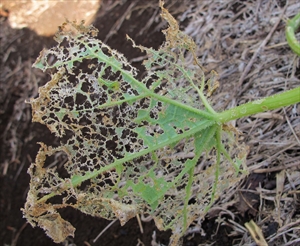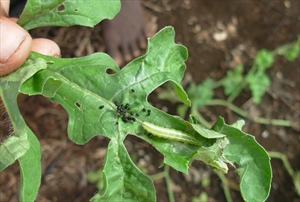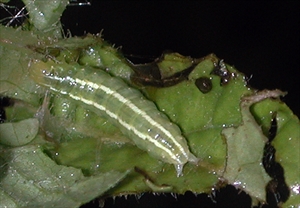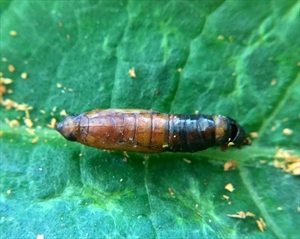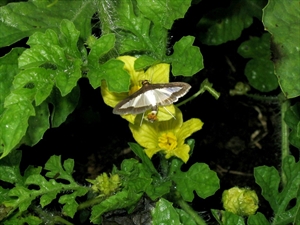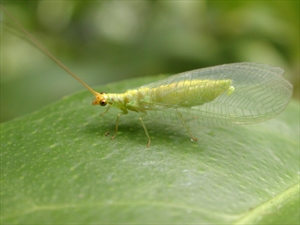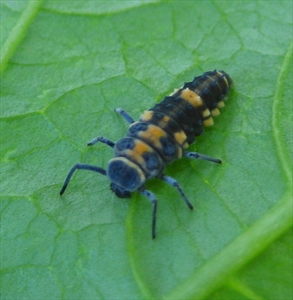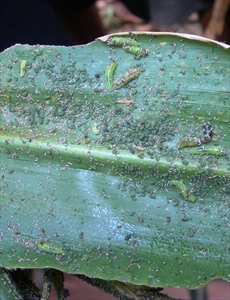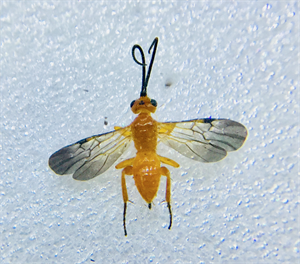- Worldwide distribution. In tropics and sub-tropics. On cucurbits; common cucurbits are watermelon, cucumber, melon, pumpkin and snake gourd. An important pest.
- Eggs are laid in small groups on the buds or flowers. The larvae hatch, feed on growing tips of new leaves, roll the leaves, fasten them with silk, and eat them between the veins. Young fruits are attacked.
- Natural enemies: parasitoid wasps; lacewing, ladybird beetle, hoverfly larvae.
- Cultural control: check regularly for infestations (rolled leaves, droppings), and squeeze exposed larvae (mostly on underside of leaves) and those in rolled leaves between finger and thumb.
- Chemical control: PDPs: chilli, derris, pyrethrum, or neem; use Bt (Bacillus thuringiensis), or spinosad (or spinetorum), but best on young larvae. Avoid synthetic pyrethroids, if possible.
Pacific Pests, Pathogens and Weeds - Online edition
Pacific Pests, Pathogens, Weeds & Pesticides
Cucumber moth (033)
Cucumber moth. Other common names are, melon moth, pumpkin caterpillar, cucurbit caterpillar, watermelon worm. In Southeast Asia, it is known as the white cucumber moth, with WCM as the acronym.
Diaphania indica. A moth of the Crambidae.
AUTHORS Grahame Jackson, Mani Mua & Helen Tsatsia
Information from Everatt et al. (2015) Cucurbit moths Diaphania species. Plant Pest Fact Sheet. Department of Environment, Food and Rural Affairs. (https://planthealthportal.defra.gov.uk/assets/factsheets/diaphania-indica-nitidalis-hyalinata.pdf); and CABI (2020) Diaphania indica (cucumber moth). Crop Protection Compendium. (https://www.cabi.org/cpc/datasheet/19657); and from Walker K (2007) Cucumber moth (Diaphania indica): PaDIL - http://www.padil.gov.au; Diaphania indica (2020) Wikipedia. (https://en.wikipedia.org/wiki/Diaphania_indica). Photo 3 Wilco Liebregts, Ecoconsult, Fiji. Photos 4&5 Gerald McCormack, Cook Islands Biodiversity & Natural Heritage: (http://cookislands.bishopmuseum.org/). Photo 7 Whitney Cranshaw, Bugwood.org. Photo 8 Suzanne Neave, CABI, UK.
Produced with support from the Australian Centre for International Agricultural Research under project PC/2010/090: Strengthening integrated crop management research in the Pacific Islands in support of sustainable intensification of high-value crop production, implemented by the University of Queensland and the Secretariat of the Pacific Community.
